For Milwaukee homeowners, understanding the intricacies of furnace filters and HVAC systems is paramount to maintaining indoor air quality, energy efficiency, and a comfortable living environment. Familiarizing yourself with key furnace filter terms not only simplifies HVAC discussions with our professionals but empowers you to make informed decisions regarding your home’s heating and cooling system.
As an HVAC service and repair company serving Milwaukee, Washington, and Waukesha counties, Burkhardt Heating & Cooling presents this comprehensive glossary designed to help you become well-versed in crucial furnace filter terminology.
This article provides clear, concise explanations of essential furnace filter concepts and terms, ensuring you have the knowledge to navigate your home’s HVAC needs confidently. From MERV ratings and filter types to system maintenance and indoor air quality, this furnace filter glossary will be an indispensable reference for every Milwaukee homeowner.
Adjust your thermostat and delve into the world of furnace filters with Burkhardt Heating & Cooling as your guide!
MERV Ratings: Determining Filter Efficiency
One of the critical terms to understand when considering furnace filters is MERV (Minimum Efficiency Reporting Value). MERV ratings, ranging from 1 to 20, measure a filter’s ability to trap airborne particles, such as dust, pollen, and pet dander. A higher MERV rating signifies a filter’s increased efficiency in capturing smaller particles and providing superior air filtration.
Selecting a furnace filter with an appropriate MERV rating that balances efficient air filtration with proper airflow for your HVAC system is crucial.
Furnace Filter Types: Matching Your Home’s Needs
Several types of furnace filters are available, each designed to cater to specific air filtration requirements:
- Disposable fiberglass filters: These affordable filters are made from spun fiberglass and have low MERV ratings (1-4), making them suitable for basic particle filtration but less effective in trapping smaller allergens and contaminants.
- Disposable pleated filters: Constructed from polyester or cotton paper, pleated filters typically have MERV ratings between 5 and 13, and are effective in capturing pet dander, mold spores, and other allergens. Their pleated design increases surface area for enhanced filtration.
- Washable electrostatic filters: These reusable filters employ static electricity to attract and capture airborne particles. They usually have MERV ratings from 1 to 4; however, their reusability makes them environmentally friendly and cost-effective.
- High-efficiency particulate air (HEPA) filters: With MERV ratings between 17 and 20, HEPA filters are known for their efficiency in capturing extremely small particles, including pet dander, allergens, bacteria, and viruses. However, their high filtration capacity may restrict airflow in some residential HVAC systems, reducing energy efficiency.
Airflow: Balancing Filtration and Energy Efficiency
When discussing furnace filters, airflow describes the unobstructed air movement through your HVAC system. Filters with higher MERV ratings can restrict airflow due to their denser composition. Maintaining proper airflow is essential to prevent strain on your HVAC system, ensure energy efficiency, and prolong your system’s lifespan. When selecting a furnace filter, consider striking a balance between effective air filtration and maintaining optimal airflow.
Indoor Air Quality: Health and Comfort in Your Milwaukee Home
Indoor air quality (IAQ) is a term that encompasses the cleanliness, freshness, and overall healthiness of your home’s air. Furnace filters are vital in improving your home’s IAQ by trapping and removing contaminants like dust, pollen, pet dander, and mold spores. Investing in a high-quality furnace filter and regularly maintaining your HVAC system are crucial steps to ensure a healthy and comfortable living environment.
HVAC System Maintenance: A Milwaukee Homeowner’s Responsibility
Proper maintenance of your home’s HVAC system is essential for its efficiency, performance, and longevity. Regular cleaning, inspection, and tune-ups can help prevent system breakdowns, costly energy bills, and uncomfortable living conditions. Some key maintenance tasks every Milwaukee homeowner needs to be aware of include:
- Furnace filter inspection and replacement: Regularly checking your furnace filter, at least every 30 to 90 days, ensures it remains effective in trapping particles. Replace disposable filters or clean washable ones as needed.
- Ductwork cleaning: Accumulated dust, debris, and allergens in your home’s ductwork can negatively impact your indoor air quality. Arrange for professional ductwork cleaning every three to five years, or as recommended by your HVAC service provider.
- Annual HVAC system inspections: Schedule annual HVAC inspections with Burkhardt Heating & Cooling to assess your system’s efficiency, correct small issues before they become significant problems, and extend your system’s lifespan.
SEER Ratings: Evaluating HVAC System Energy Efficiency
When discussing furnace filters and HVAC systems, the term SEER (Seasonal Energy Efficiency Ratio) is vital. SEER ratings measure the energy efficiency of your home’s cooling system, with a higher rating denoting better efficiency. While furnace filters do not directly impact SEER ratings, selecting the appropriate filter and maintaining optimal airflow are crucial factors that contribute to your overall HVAC system efficiency.
Energy Star Certification: Recognizing Efficient HVAC Products
Energy Star is a program run by the U.S. Environmental Protection Agency (EPA) and the Department of Energy that sets stringent energy efficiency criteria for home appliances, including HVAC systems. Products that carry an Energy Star certification meet these energy efficiency guidelines, offering substantial energy savings and reduced environmental impact. When investing in a new HVAC system and coupling it with an appropriate furnace filter, considering Energy Star certification can contribute to a more efficient, eco-friendly home.
Armed with a better understanding of furnace filter terminology and concepts, Milwaukee homeowners can navigate the world of HVAC systems with confidence. By comprehending the role furnace filters play in maintaining indoor air quality, balancing filtration and airflow, and performing routine maintenance, you can ensure a more comfortable, efficient, and healthy living environment in your home.
Empower Yourself with HVAC Knowledge and Expert Services from Burkhardt Heating & Cooling
Understanding furnace filter terminology is an essential skill for every Milwaukee homeowner. By familiarizing yourself with key concepts like MERV ratings, filter types, airflow, and energy efficiency, you can make informed decisions, communicate effectively with HVAC professionals, and maintain a comfortable, healthy home environment.
At Burkhardt Heating & Cooling, we pride ourselves on providing comprehensive HVAC services, including installation, maintenance, and repair to residents in Milwaukee, Washington, and Waukesha counties. Our experienced team is dedicated to helping homeowners like you make the most of their HVAC systems and enjoy the benefits of improved indoor air quality, energy efficiency, and comfort.
Ready to take control of your home’s air quality and HVAC performance? Contact Burkhardt Heating & Cooling today for expert guidance, reliable services, and a tailored approach that meets your unique needs. Let’s make your home a haven together!












